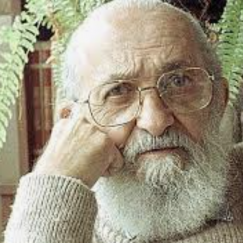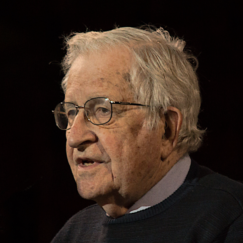If students are not trained to ask basic questions about the images which confront them, if they are not asked to examine the knowledge and assumptions which they already possess, they are being denied the opportunity to develop the most simple and essential critical tools.
Bio/Short Description
Sr. Elizabeth Thoman CHM spent her life advocating for media literacy education, helping to advance the growth of the national media literacy movement in the United States. When she founded Media&Values Magazine in 1977, it was an extension of a class project that she developed as a student at USC, working under Professor Richard Byrne. The magazine was imagined as one that would “explore the values questions raised by the transition from the Industrial Age to the coming Information Age.” The magazine ran for 16 years (63 issues), tackling such issues as media and war, gender stereotypes and racism in the media, media regulation, children and media and more. As circulation reached 10,000, Liz was motivated to create the Center for Media Literacy in 1989, developing a website and creating curriculum materials including “Beyond Blame: Challenging Violence in the Media,” which offered lesson plans, video clips and readings designed to help students of all ages develop critical thinking skills in responding to media violence.
When Liz attended a Canadian media literacy conference in Guelph, Ontario and a UNESCO sponsored-conference on media education in Toulouse, France in 1989, she was inspired to help coordinate American educators at the national level to advance the development of a media literacy movement. She worked with Charles Firestone of the Aspen Institute to develop the National Leadership Conference on Media Literacy, which was held in 1992. At this meeting, the definition of media literacy was established as the “ability to access, analyze, evaluate and create media in a wide variety of forms.”
After hosting a successful media literacy conference in Los Angeles in 1996, Elizabeth Thoman co-founded the Partnership for Media Education to promote continued professional development in the field. In 2001 PME evolved into the Alliance for a Media Literate America (AMLA), which was renamed the National Association for Media Literacy Education (NAMLE) as the official membership organization for the field, with over 3,500 members as of 2016.
Other Grandparents
 Marlon Posted By: Renee HobbsOn:11/29/2023 - 00:56
Marlon Posted By: Renee HobbsOn:11/29/2023 - 00:56
 danahPosted By: Yonty FriesemOn:01/06/2023 - 07:34
danahPosted By: Yonty FriesemOn:01/06/2023 - 07:34
 PaoloPosted By: Renee HobbsOn:07/22/2021 - 16:11
PaoloPosted By: Renee HobbsOn:07/22/2021 - 16:11
 NoamPosted By: Renee HobbsOn:05/23/2020 - 03:48
NoamPosted By: Renee HobbsOn:05/23/2020 - 03:48
 Jon Posted By: Renee HobbsOn:05/10/2020 - 00:12
Jon Posted By: Renee HobbsOn:05/10/2020 - 00:12



Renee Hobbs
I was a fan of Media&Values magazine ever since I saw it for sale at the original Border's Bookshop in Ann Arbor, Michigan in the indie press section of the bookstore. I was intrigued at how it translated academic scholarship for a popular audience with a lens rooted in faith and values. It was a media literacy magazine for adult readers. So cool!
I had the opportunity to meet Liz first at the Guelph media literacy conference in Canada in 1989 and later at the Aspen Institute event she organized with Charlie Firestone in 1992. She was intimidating -- icy, cool and strong. But I saw how much of a learner she was -- she had worked hard to make the National Leadership Conference in Media Literacy a reality and she was a field builder.
As we walked the grounds of the Maryland campus on the Eastern Shore, we traded ideas and I could see her fine strategic thinking at work. I made it a point to visit her in Los Angeles and learn more about the work of the Center for Media Literacy and by 1996 we had partnered to create the Partnership for Media Literacy, the forerunner to the National Association for Media Literacy Education. We held the first conference in Colorado Springs in 1997 to build a learning community for media literacy educators.
Kara Clayton
I met Liz Thoman over the phone during my first year of teaching in 1995. I was trying to redesign a course that I inherited. To be honest, I don’t know where I heard of the Center for Media Literacy, but I managed to stumble upon it. I made my phone call, and was connected directly to Liz’ extension. Liz was gracious enough to spend about an hour on the phone helping me to create what would be the beginning of a vital media literacy course at my school. To this day, the foundational knowledge that she provided has influenced my classroom practice as well as my professional pathway in media and digital literacy.